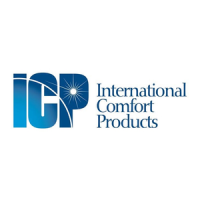11
441 01 2611 06
Indoor Combustion Air
Standard and Known--Air--Infiltration Rate Methods
ã NFPA&AGA
Indoor air is permitted for combustion and ventilation, if the
Standard or Known--Air--Infiltration Rate Method is used.
!
CARBON MONOXIDE POISONING HAZARD.
Failure to supply adequate combustion air could
result in death and/or personal injury.
Mosthomeswill requireadditionalairfromoutdoors
for combustion andventilation. A spacewith at least
50 cubic feet per 1,000 BTUH input rating or homes
with tight construction may need outdoor air to
supplement air infiltration for proper combustion
and ventilation of flue gases.
WARNING
The Standard Method may be used, if thespace has no less vol -
umethan50cubicfeet per1,000BTUHof themaximuminputrat-
ings for all gas appliances installed in the space. The standard
method permits indoor air to be used for combustion and ventila-
tion air.
The Known Air Infiltration Rate Method shall be used if the in -
filtration rate is known to be less than 0.40 air changes per hour
(ACH) and equal to or greater than 0.10 ACH. Infiltration rates
greater than 0.60 ACH shall not be used. The minimum required
volume of the space varies with the number of ACH and shall be
determined per Table 2 or Equations 1 and 2. Determine the
minimum required volume for each appliance in the space, and
add the volumes together to get the total minimum required vol-
ume for the space.
MINIMUM SPACE VOLUME FOR 100% COMBUSTION AND VENTILATION AIR FROM INDOORS (ft
3
)
Table 2
Other Than Fan-AssistedTotal
(1,000’s Btuh)
Fan-assisted Total
(1,000’s Btuh)
ACH
30 40 50 50 75 100 125 150
0.60 1,050 1,400 1,750 1,250 1,875 2,500 3,125 3,750
0.50 1,260 1,680 2,100 1,500 2,250 3,000 3,750 4,500
0.40 1,575 2,100 2,625 1,875 2,813 3,750 4,688 5,625
0.30 2,100 2,800 3,500 2,500 3,750 5,000 6,250 7,500
0.20 3,150 4,200 5,250 3,750 5,625 7,500 9,375 11,250
0.10 6,300 8,400 10,500 7,500 11,250 15,000 18,750 22,500
0.00 NP NP NP NP NP NP NP NP
NP = Not Permitted
Table 2MinimumSpace Volumesweredeterminedbyusingthe
following equations from the National Fuel Gas Code ANSI
Z223.1/NFPA 54--2002, 8.3.3.2:
1. For other than fan--assisted appliances such as a draft
hood--equipped water heater,
1000 Btu / hr
21 ft
3
(
I
other
)
Volume
other
=
ACH
2. For fan--assisted appliances such as this furnace,
1000 Btu / hr
15 ft
3
(
I
fan
)
Volume
fan
=
ACH
If:
I
other
= combined input of all other than fan--assisted
appliances in Btu/hr
I
fan
=combinedinputofallfan--assistedappliancesinBtu/hr
ACH = air changes per hour (ACH shall not exceed 0.60.)
The following requirements apply to the Standard Method and to
the Known Air Infiltration Rate Method.
· Adjoining rooms can be considered part of a space, if there
are no closable doors between rooms.
· Anatticorc rawlspacemaybeconsideredaspacethatfreely
communicateswiththeoutdoorsprovidedthereareadequate
ventilationopeningsdirectlytooutdoors.OpeningsMUSTre-
mainopenandNOThaveanymeansofbeingclosedoff.Ven -
tilation openings to outdoors MUST beat least1 square inch
offree areaper4,000 BTUHoftotalinputratingforallgasap-
pliances in the space.
· In spaces that use the Indoor Combustion Air Method, in-
filtration should be adequate to provide air for combustion,
ventilation and dilution of flue gases. However, in buildings
withunusuallytightconstruction,additional air MUST bepro-
vided using the methodsdescribed in section titled Outdoor
Combustion Air Method:
· Unusually tight construction is defined as Construction with:
1. Walls and ceilings exposed to the outdoors have a con-
tinuous,sealed vaporbarrier.Openingsare gasketed or
sealed and
2. Doors and openable windows are weather stripped and
3. Other openings are caulked or sealed. These include
joints around window and door frames, between sole
plates and floors, between wall--ceiling joints, between
wall panels, at penetrations for plumbing, electrical and
gas lines, etc.
Ventilation Air
Someprovincialcodesandlocalmunicipalitiesrequireventilation
ormake--up air be brought into the conditioned space asreplace-
mentair.Whichevermethodisused,themixedreturnairtempera-
ture across the heat exchanger MUST not fall below 60°
continuously,or55° on anintermittentbasisso thatflue gases will
not condense excessively in the heat exchanger. Excessivecon-
densation will shorten the life of the heat exchanger and possibly
void your warranty.

